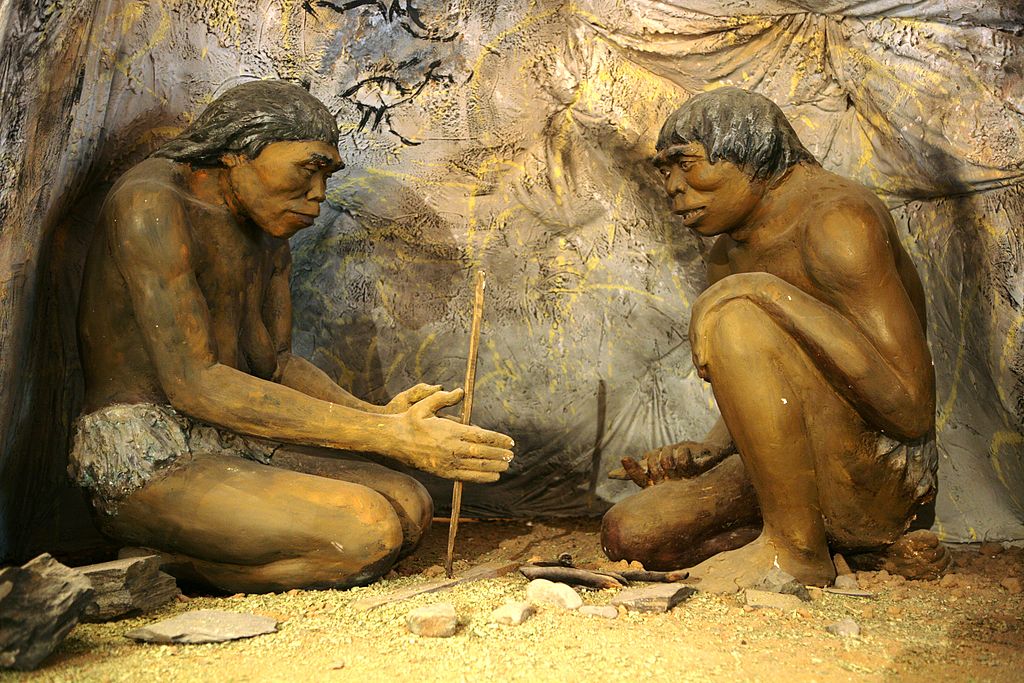
-
Published: 18 February 2023

Edited by| Alexander Yanixiana
History section CJ journalist
18 Feb.2023
Beginning of the Stone Age
The oldest indirect evidence found of stone tool use is fossilized animal bones with tool marks; these are 3.4 million years old and were found in the Lower Awash Valley in Ethiopia. Archaeological discoveries in Kenya in 2015, identifying what may be the oldest evidence of hominin use of tools known to date, have indicated that Kenyanthropus platyops (a 3.2 to 3.5-million-year-old Pliocene hominin fossil discovered in Lake Turkana, Kenya in 1999) may have been the earliest tool-users known.
The oldest stone tools were excavated from the site of Lomekwi 3 in West Turkana, northwestern Kenya, and date to 3.3 million years old.[8] Prior to the discovery of these "Lomekwian" tools, the oldest known stone tools had been found at several sites at Gona, Ethiopia, on sediments of the paleo-Awash River, which serve to date them.
All the tools come from the Busidama Formation, which lies above a disconformity, or missing layer, which would have been from 2.9 to 2.7 mya. The oldest sites discovered to contain tools are dated to 2.6–2.55 mya.
One of the most striking circumstances about these sites is that they are from the Late Pliocene, where prior to their discovery tools were thought to have evolved only in the Pleistocene.
RELATED NEWS| PREHISTORIC STONE AGE MILLION YEARS AGO
The species that made the Pliocene tools remains unknown. Fragments of Australopithecus garhi, Australopithecus aethiopicus, and Homo, possibly Homo habilis, have been found in sites near the age of the Gona tools.
In July 2018, scientists reported the discovery in China of the known oldest stone tools outside Africa, estimated at 2.12 million years old.
End of the Stone Age
Innovation of the technique of smelting ore is regarded as the ending of the Stone Age and the beginning of the Bronze Age. The first highly significant metal manufactured was bronze, an alloy of copper and tin or arsenic, each of which was smelted separately. The transition from the Stone Age to the Bronze Age was a period during which modern people could smelt copper but did not yet manufacture bronze, a time known as the Copper Age (or more technically the Chalcolithic or Eneolithic, both meaning 'copper–stone'). The Chalcolithic by convention is the initial period of the Bronze Age. The Bronze Age was followed by the Iron Age.
The transition out of the Stone Age occurred between 6000 and 2500 BC for much of humanity living in North Africa and Eurasia.
The first evidence of human metallurgy dates to between the 6th and 5th millennia BC in the archaeological sites of the Vinča culture, including Majdanpek, Jarmovac, Pločnik, and Rudna Glava in modern-day Serbia.
Ötzi the Iceman, a mummy from about 3300 BC, carried with him a copper axe and a flint knife.
In some regions, such as Sub-Saharan Africa, the Stone Age was followed directly by the Iron Age. The Middle East and Southeast Asian regions progressed past Stone Age technology around 6000 BC.[citation needed] Europe and the rest of Asia became post-Stone Age societies by about 4000 BC.
The proto-Inca cultures of South America continued at a Stone Age level until around 2000 BC, when gold, copper, and silver made their entrance. The peoples of the Americas notably did not develop a widespread behavior of smelting bronze or iron after the Stone Age period, although the technology existed.
Stone-tool manufacture continued even after the Stone Age ended in a given area. In Europe and North America, millstones were in use until well into the 20th century and still are in many parts of the world.
